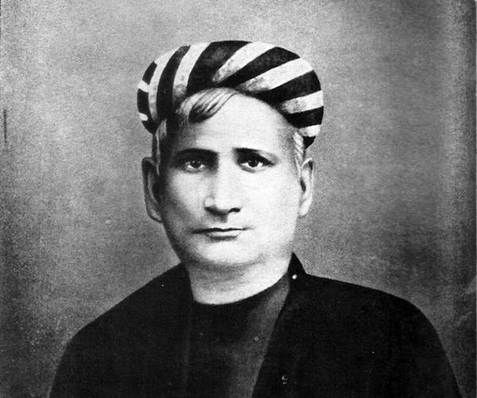Published on Nov 7, 2025
Daily PIB Summaries
PIB Summaries 07 November 2025

Content
- 150 Years of Vande Mataram
150 Years of Vande Mataram
Why in News ?
- 7 November 2025 marks 150 years since Vande Mataram was first published in Bangadarshan (1875).
- The Government of India launched nationwide commemorations to celebrate its enduring legacy as India’s National Song—a symbol of unity, resistance, and nationalism.
Relevance
GS-1 (History & Culture):
- Reflects the evolution of Indian nationalism, Bengal Renaissance, and cultural awakening through literature.
- Highlights Bankim Chandra Chatterjee’s contribution to shaping patriotic and literary consciousness.

Basic Facts
- Author: Bankim Chandra Chatterjee (1838–1894)
- First Publication: Bangadarshan magazine, 7 November 1875
- Incorporated in: Anandamath (1882)
- First Sung by: Rabindranath Tagore, 1896 Indian National Congress session, Calcutta
- National Song Status: Adopted by Constituent Assembly on 24 January 1950
- Translation: “Mother, I Bow to Thee”
- Musical Composition: Set to tune by Rabindranath Tagore
Historical Context
- Composed during British colonial rule, the song personified India as the Mother Goddess, invoking divine reverence and national pride.
- Initially a literary expression, it evolved into a political and spiritual anthem during the anti-colonial struggle.
- The “religion of patriotism” central to Anandamath reflected early nationalist consciousness.
- Anandamath depicted India as three forms of the mother:
- Glorious Past
- Subjugated Present
- Resurgent Future
Cultural & Political Evolution
- 1875: Published independently in Bangadarshan.
- 1882: Included in Anandamath.
- 1896: Sung at Congress session by Tagore.
- 1905 (7 August): Used as political slogan during the Swadeshi & anti-partition movement in Bengal.
- 1906: Adopted at Varanasi session of INC as all-India patriotic song.
- 1907: Madam Bhikaji Cama inscribed “Vande Mataram” on the tricolour flag raised in Stuttgart, Germany.
- 1908: Chanted during Tilak’s arrest; symbol of unity across linguistic and religious lines.
Symbol of Resistance
- 1905–1911 Bengal Partition Era:
- Became the rallying cry of the Swadeshi Movement.
- British authorities banned its recitation in schools and colleges.
- Students in Rangpur fined ₹5 each for chanting it.
- Bipin Chandra Pal & Aurobindo Ghose edited the newspaper BandeMataram, spreading nationalist ideology.
- Prabhat Pheris led by Bande Mataram Sampradaya in North Calcutta promoted patriotic awakening.
Impact Beyond India
- 1907: Tricolour with “Vande Mataram” raised in Europe by Madam Cama.
- 1909: Madan Lal Dhingra’s last words before execution—“Bande Mataram”.
- 1909: Bande Mataram magazine published from Geneva by Indian patriots.
- 1912: South Africans welcomed Gokhale with cries of Vande Mataram.
Constitutional Recognition
- 24 January 1950:
- Dr. Rajendra Prasad declared in Constituent Assembly:
- Jana Gana Mana — National Anthem.
- Vande Mataram — National Song, equal status and honor.
- Dr. Rajendra Prasad declared in Constituent Assembly:
- No formal debate; consensus reflected emotional reverence attached to it.
Thematic Significance
- Literary Dimension: Blends devotion (bhakti) and patriotism—symbol of cultural renaissance.
- Political Dimension: Served as India’s first nationalist hymn, linking emotional nationalism with political mobilization.
- Social Dimension: Fostered unity beyond religion, caste, and language.
- Philosophical Core:
- Bankim envisioned the nation as divine motherhood.
- Sri Aurobindo called it “the mother with seventy million arms”—symbol of empowerment and resistance.
Data & Legacy Highlights
| Aspect | Key Data / Event |
| Year of Composition | 1875 |
| Year of Publication in Anandamath | 1882 |
| First Sung | 1896 Congress Session |
| Political Usage | 7 August 1905 (Swadeshi Movement) |
| Banned by British | 1905–1906 in Bengal |
| Constituent Assembly Recognition | 24 January 1950 |
| 150th Anniversary Celebration | November 2025–November 2026 |
Overview
- Bankim’s Contribution: Created India’s first literary articulation of Motherland as Goddess, blending spiritual nationalism and political activism.
- Role in Freedom Struggle: Unified educated elite and masses through shared symbolism; influenced leaders like Aurobindo, Tilak, Cama, and Pal.
- Cultural Continuity: The song still resonates through public ceremonies, school recitations, and patriotic art—bridging colonial resistance and postcolonial nationhood.
- Modern Relevance: Reinforces civic nationalism and environmental symbolism (tree plantation theme linking “Mother Earth” with “Mother India”).
Conclusion
- Vande Mataram remains the moral and emotional foundation of India’s national identity.
- It transformed from poetry to protest, art to action, and song to symbol of independence.
- The 150-year commemoration is not merely a tribute to Bankim Chandra Chatterjee but a reaffirmation of India’s unity in diversity, cultural pride, and spiritual nationalism.
